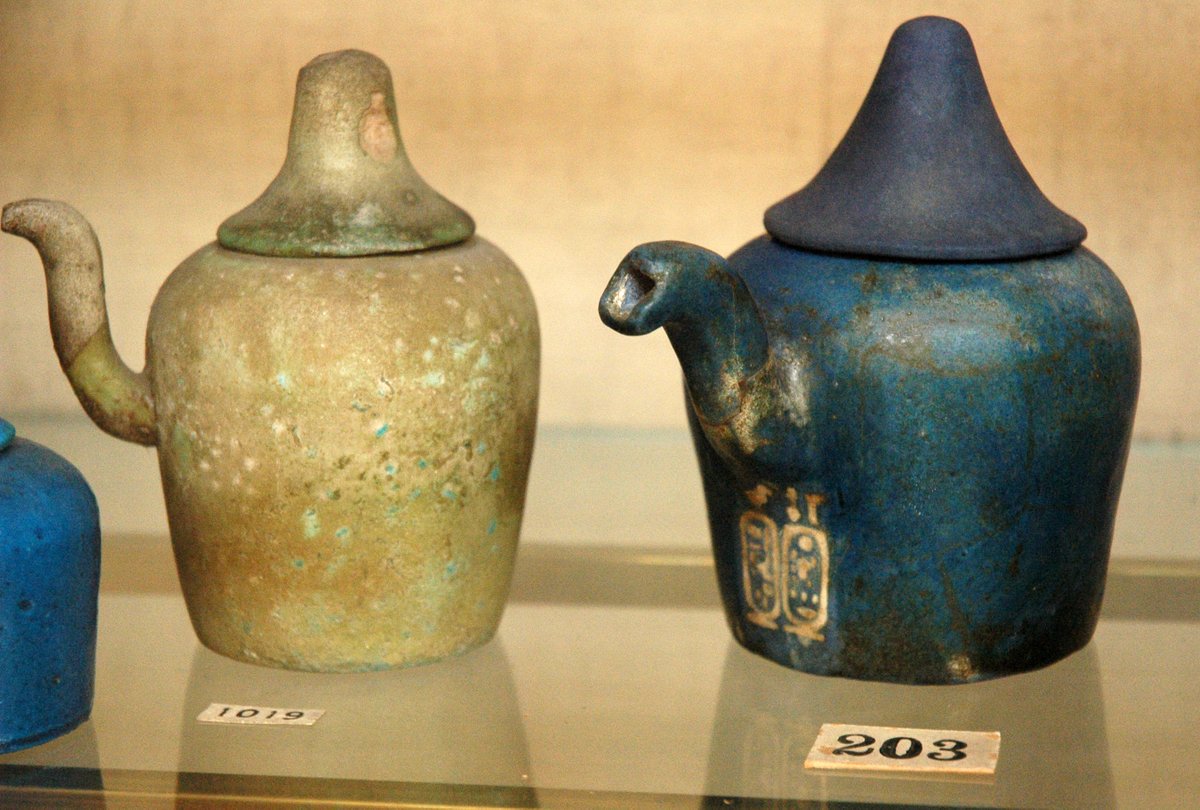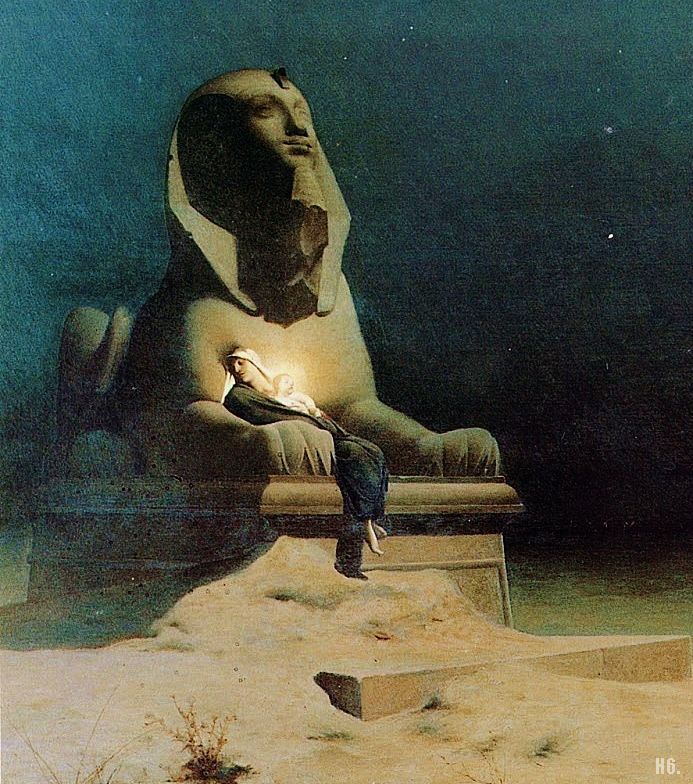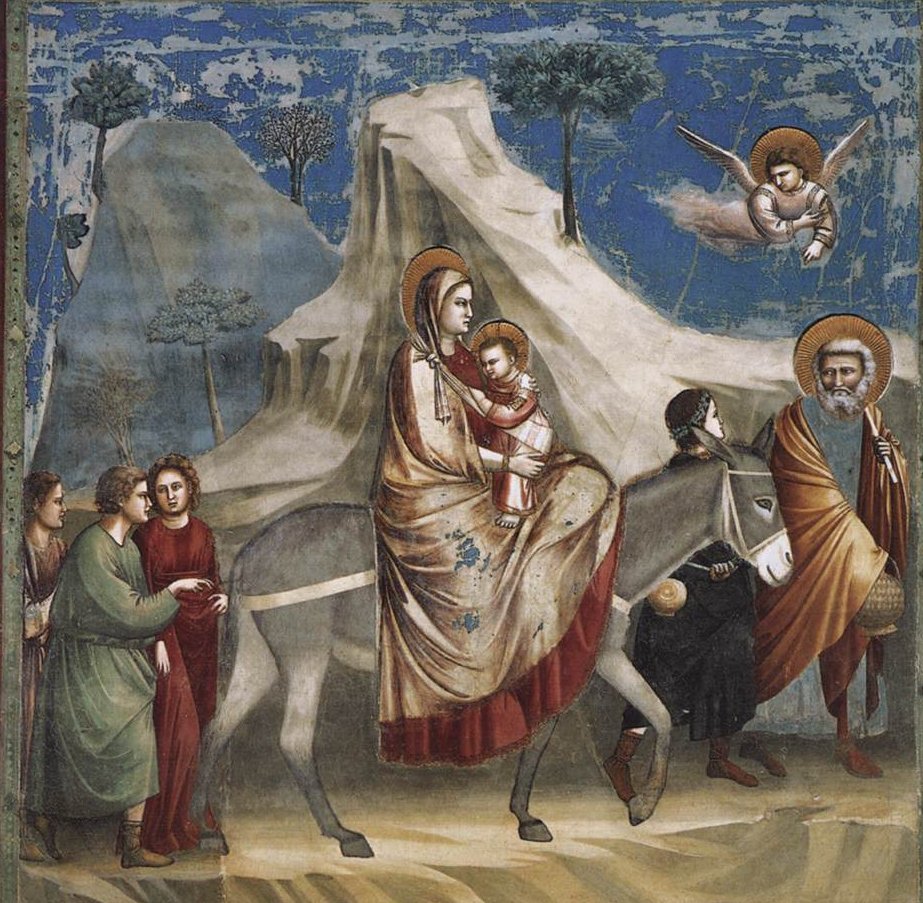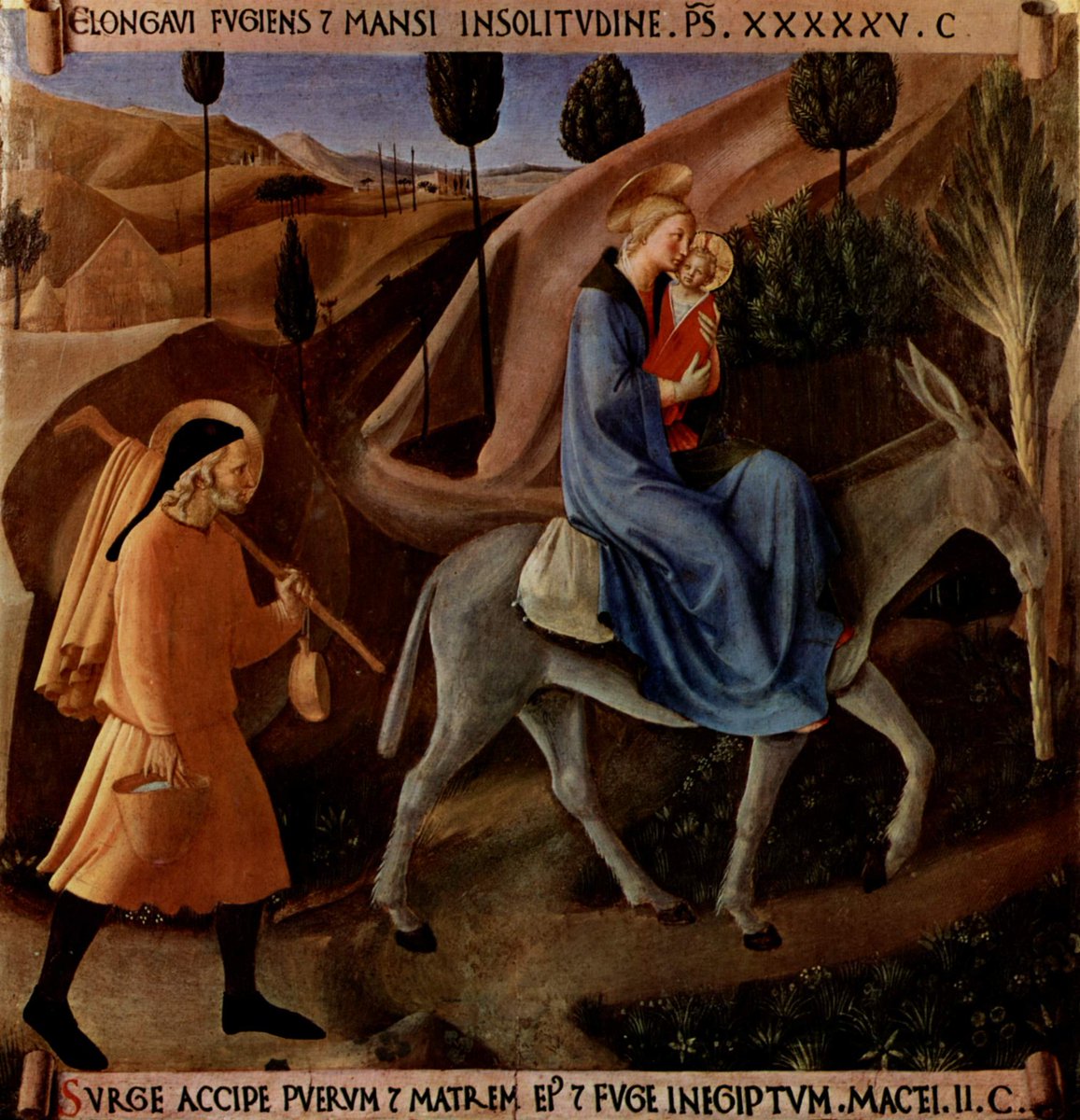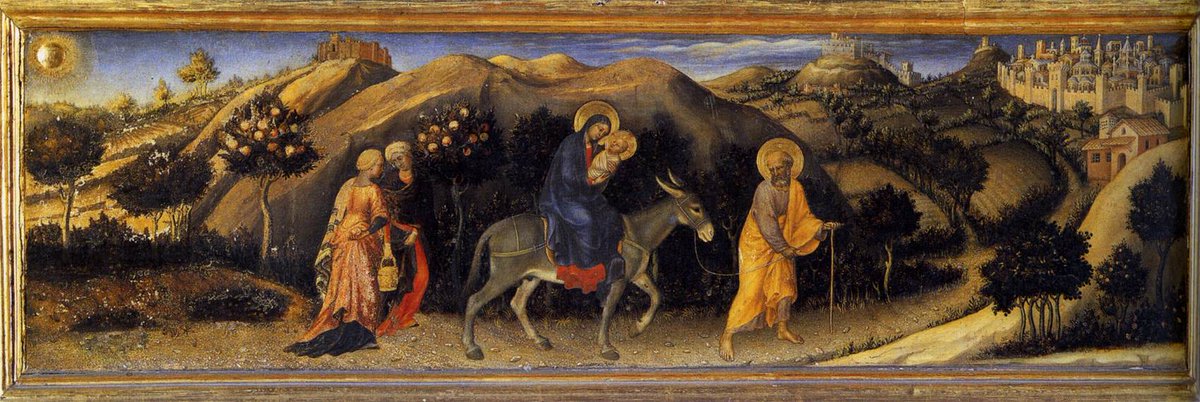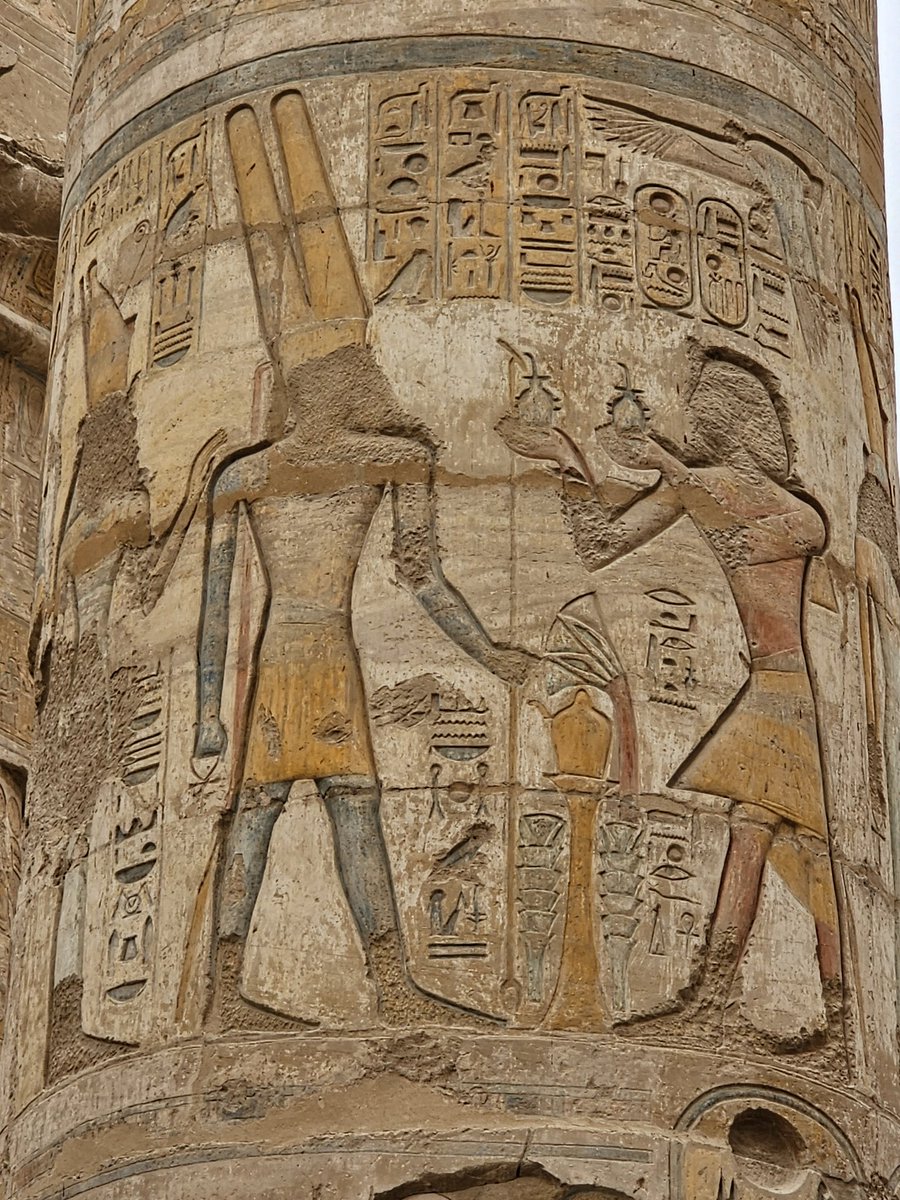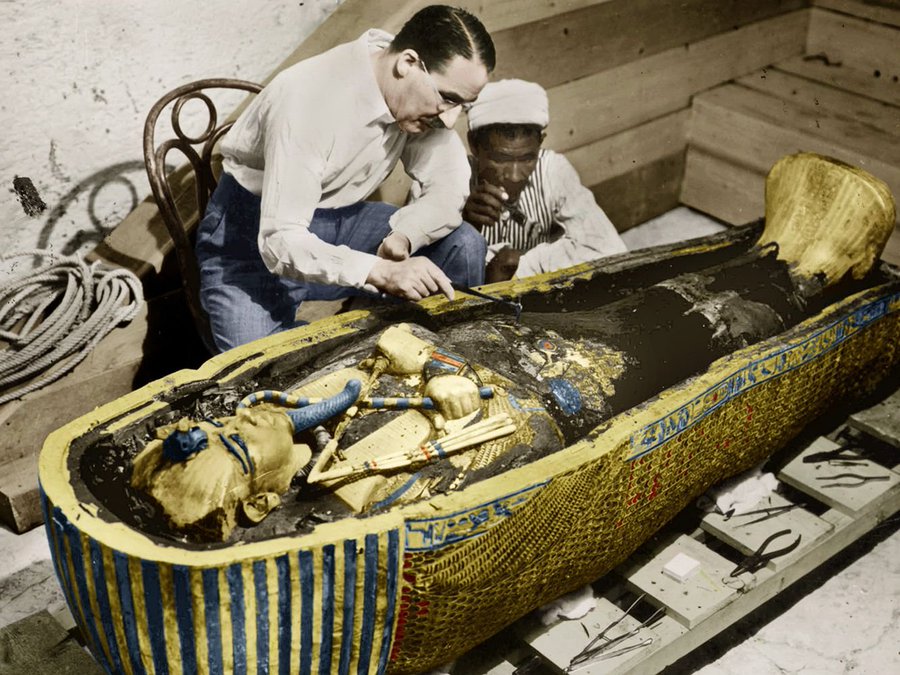1/ T-30 of my Tutankhamun 100 day countdown: Today faience vessels. #Egypt #Archaeology #Tutankhamun #history #Archaeology #Tutankhamen #Toutankhamon #Tutancâmon #Tutanchamun #توتعنخآمون #ancient #Tutankamón #ツタンカーメン #图坦卡蒙 #圖坦卡蒙 #Τουταγχαμών #тутанхамон #투탕카 

2/ Egyptian faience was a kind of glazed pottery, often in a range of blue & blue-green shades. The shiny surface was even compared favorably to gold. Dozens of faience objects were found in Tutankhamun's tomb including ritual vessels. 
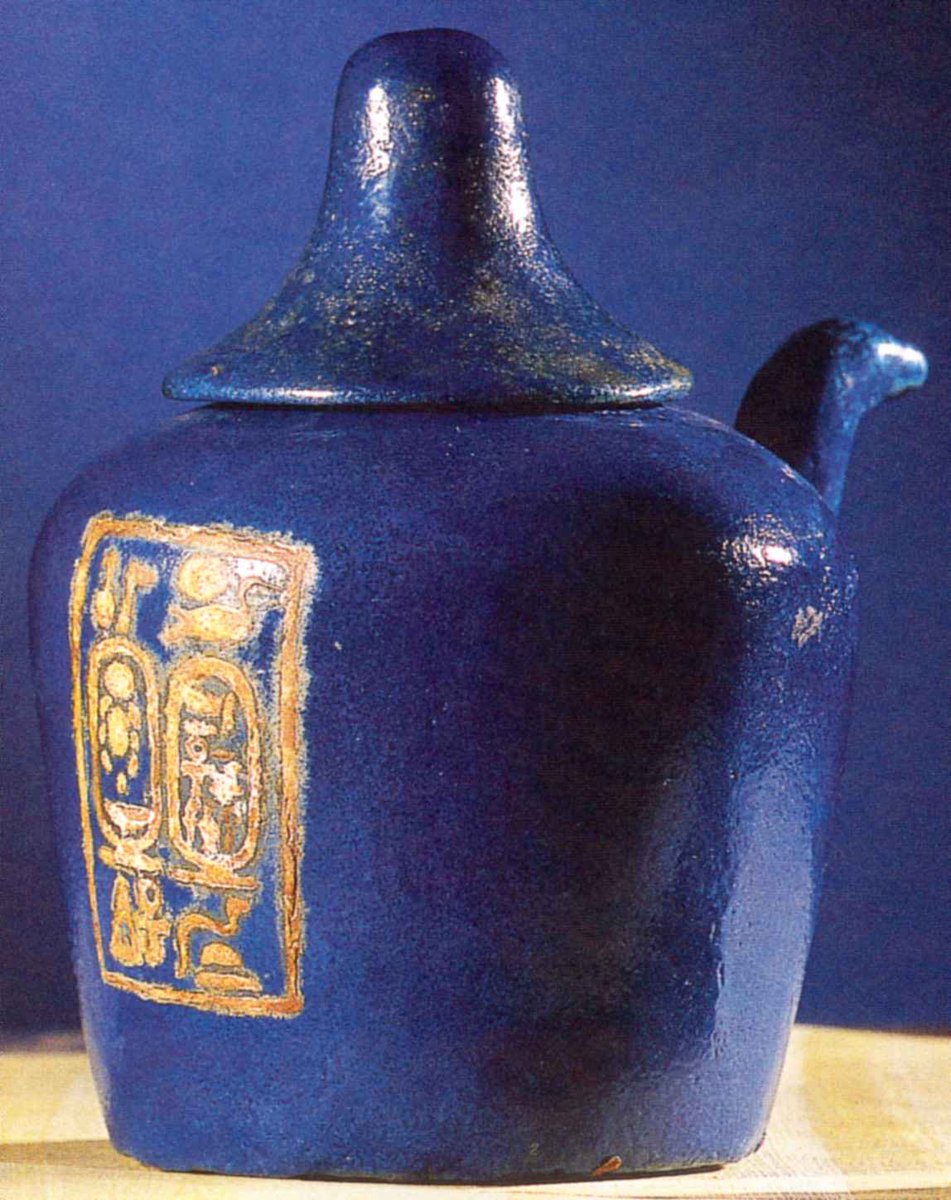
3/ Ritual vessels were used to pour libations of water & wine. Two common shapes were the tall, slender "Hes-vase" & the squat "Nemset-jar". Both vessels can appear with or without a spout. Egypt #Archaeology #AncientArt #History #Jewelry #Ancient #AncientEgypt
#Egypt #Egypte
#Egypt #Egypte

4/ Other shapes and colors of faience vessels were found in the tomb, often inscribed with Tutankhamun's names & titles. #Egipto #Egito #Αίγυπτος #Ägypten #מִצְרַיִם #Egitto #エジプト #이집트 #Египет #Єгипет #埃及 #埃及 #مصر 

5/ These Nemset-jars have conical lids & long curving spouts. #Archaeology #archaeohistories #Archäologie #archéologie #考古学 #考古学 #考古學 #arqueología #archeologia #archeologie #αρχαιολογία #पुरातत्व #고고학 #arqueologia #arkeoloji #археологія #arkeologi #археология 

8/ This ovoid jar with a long straight neck as Tutankhamun's cartouches & Queen Ankhesenamun's cartouche (left) 

9/ The globular white faience jar with the wide rim is called a Nu-Jar. They often held wine offerings, but some held cosmetics. 

12/ This unglazed pottery nemset-jar has painted decoration and a lid shaped like the hawk-headed sun-god Re-Horakhty. In temple ritual, these vessels were often made of gold or silver 

13/ No gold vessels of these types were found in Tutankhamun's tomb, but this wonderful silver vase shaped like a pomegranate fruit was among the king's possessions. Its engraved with floral decoration. 



14/ Other unglazed & undecorated pottery included amphorae-jars for wine. On the right & middle, a typical wine jar with its clay sealing intact. An ink inscription on the shoulder records the date & place of vintage. The pointed bottoms required wood or pottery jar stands 



15/ Tomorrow on my Tutankhamun 100 day countdown to the centenary of his tomb's discovery on November 4th, some of the king's chairs & foot stools #furniture #ancient #Egypt 



• • •
Missing some Tweet in this thread? You can try to
force a refresh


